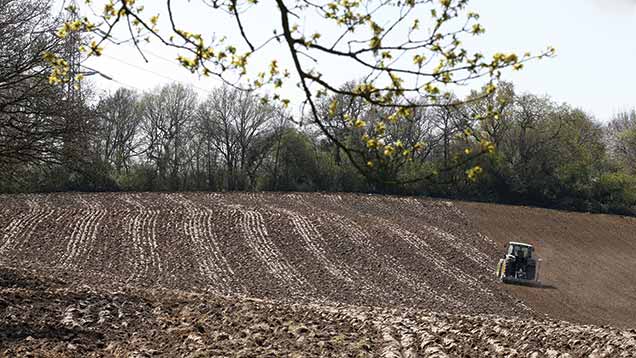Tenancy debate: Minimum 10-year term would affect letting sector
 © Gary Hawkins/Rex Shutterstock
© Gary Hawkins/Rex Shutterstock In the debate on Farm Business Tenancy length, agricultural law specialist Christopher Findley considers whether there is a case for a minimum 10-year term and the impact this would have on the letting sector.
In the 20 years to 1995, secure farm tenancies gradually ceased to be granted.
State regulation of farm tenancies between 1976 and 1986 resulted in few private owners wanting to let long-term, while institutional landowners either sold their holdings, often to sitting tenants, or dug in for the long term.
By 1980, instead of letting, owners had found farmers willing to collaborate using share-farming, partnerships and contracting arrangements. By 1985 hardly anyone was granting tenancies.
See also: Duchy of Cornwall on farm tenancy and viable rural communities
Tenants wanted to rent land and owners wanted to let it but the letting system was largely bypassed using alternative arrangements, either statutory exceptions or Gladstone v Bower tenancies of up to two years. Secure tenancies were granted only by succession or by accident, until the introduction of Farm Business Tenancies (FBTs) changed the way land could be let.
Why let at all?
Contrary to popular opinion, most people buy land not for tax reasons but because it represents security, solidity and an unchanging asset in an increasingly uncertain world.
Some recent major land purchasers have been attracted by wanting to take part actively in food production.
They are prepared to invest heavily in machinery, re-draining and improving land.
Although some may have been attracted to invest in land for its tax advantages, all need stability and UK land ownership has the backdrop of one of the most stable political systems in the world.
Many longer-term landowners, both individuals and institutions, do not want to farm with a direct labour force or through contracting or share farming, so there will always be those who will offer land to rent.
Those who hold land long-term do not like to change tenants or contract farmers every three to five. It is risky, costly and destabilising. The landlord and tenant relationship only prospers while the wishes of both are being accommodated. Landowners may be advised to let for three to five years as an initial term, to retain flexibility, but then allow tenancies to roll on an annual basis.
Freedom to negotiate the length of a letting to suit both owner and tenant brings forward the greatest supply of land for letting. It is like turning on a water tap fully.
Legislation to discourage short-term lettings is only likely to restrict the amount of land available.
Turning a tap down to half flow will not create “better” water coming out of the pipe.
Balancing the interest and freedom of owner and tenant to negotiate tenancy length is not a job for government.
Arguments that short-term tenancies encourage rapacious and unethical farming practices have to be balanced against the environmental and land management measures introduced over the past 20 years of reform to farm income subsidies brought in by the CAP.
The financial returns of farming are probably more uncertain than in any other business.
Farmers, whether tenants or contract farmers, need to have the ability to adapt and survive.
Short-term tenancies have not stopped farmers bidding high tender rents to secure more land, even though to the outsider the rent seems imprudent.
A move to encourage 10-year FBTs could result in even higher tender rents as farmers outbid each other to take on more land, partly because they know it won’t come up again for 10 years.
None of this helps new entrants but there are no schemes for new entrants into other businesses.
What is important universally is to attract fresh talent, better-trained and skilled, more commercially aware people into farming, whether as tenants or contracting and managing farm businesses.
It is unrealistic to expect that a viable unit would be let for an initial 10-year term to a new farmer with little previous experience of farming.
A minimum 10-year term is likely to increase the tendency of landlords to let to those with an established business and track record.
To argue, as the TFA has done, that contract farming and some other arrangements do not carry risk, have entrepreneurial input or management control will not carry any weight with legislators.
Even if it did, it would not add to the amount of land available to rent, long or short term.
The risk to the agricultural industry is that the consensus which has led to legislative updating of the FBT regime since its introduction in 1995 may be trampled underfoot if landowners’ and tenants’ organisations polarise, with each calling for more radical reform to suit its own self-interest.
In a position of advising both “sides” in this debate, my conclusion is that if successful, a campaign for a minimum 10-year term to qualify for Agricultural Property Relief from Inheritance Tax is likely to reduce the flow of land available for tenancies and increase the number of landowners going into farming themselves.
Christopher Findley is head of agriculture, estates and rural property at law firm Bircham Dyson Bell

